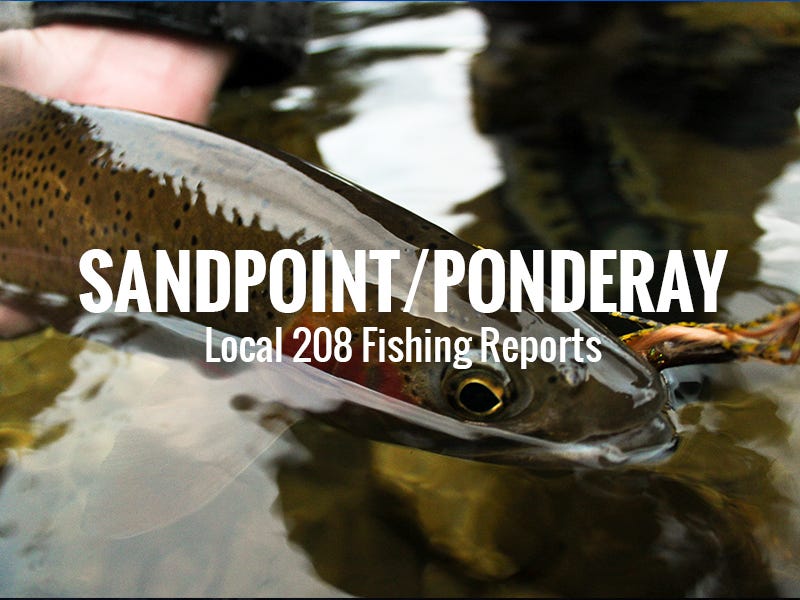Sandpoint/Ponderay Fishing Report 12.15.17

Clark Fork River (ID)
Flows have ranged from 9,000 to 28,000 cubic feet per second this week. Water clarity is excellent, and fishing can be good when flows are down. There hasn’t been much of anything hatching, and won’t be until spring. Few midges are popping on warm afternoons, but not enough to throw dries. Nymphs and streamers are, without a doubt, the most effective way to fish. Tie on a double nymph rig with a split-shot or two, and try a couple flies like a #16 black Psycho Prince or a #18 Zebra Midge. If the swing is your thing, tie on a #6 white Woolly Bugger, or a #6 olive Slump Buster.
Lake Cocolalla
It won’t be long before the lake is completely frozen over. The water is still a greenish color, limiting visibility to just under a couple feet. All of the warmwater species are on the bottom between 20-35 feet of water. The trout are anywhere between the surface to 20 feet down, cruising for random nymphs and baitfish. The bite has been very subtle, and a little slow. Some great flies would include rust Baby Gonga, #6 olive Woolly Bugger, and #4 smoke Sparkle Minnow.
Kootenai River
Flows have leveled out at 25,200 cfs. The Kootenai is definitely a viable fly-fishing option for some late fall nymphing. Spend most of your time fishing long slow moving runs close to the bank. A #8 purple Pat’s Rubberlegs is a local favorite, as well as a #16 purple BH Lightening Bug. Don’t leave your split-shot at home—you will need it to get down. A couple streamers to swing and strip are the white Mongrel Meat and the #4 Galloup’s Barely Legal grey/white. This river is home to a few giants, and late fall/winter is a great time to catch them.

Bonus Fishing Report: Olympic Peninsula (WA)
Forks area river levels are currently good to low, according to area resident and guide Matt McCullough. The primary hatchery steelhead returns in Forks are alive and well with the Bogachiel and Calawah rivers remaining the strongholds for these 3-to 9-pound fish. On the “Bogey” there is ample fly water (and ample anglers) starting from the “Hatchery Drift” down to the Leyendecker Boat Ramp and back up to the confluence with the Calawah.
In case you’re wondering, the famous Sol Duc broodstock hatchery program was shelved about four years back. So, for those interested in that historic Forks area river, you’ll have to target catch-and-release options on native steelhead season coming up in late winter and spring.
Right now, after a week or more of dry weather, the Bogey gauge reads 26.5 feet and is still dropping slowly. This translates to a flow reading of 515 cubic feet a second on the nearby Calawah. Conventional OP wisdom holds that a Bogey reading of 28 feet and down is optimal fishing for both gear and fly alike.
Currently, up to three hatchery steelhead may be retained on the Bogey and the Calawah. Fly colors that work on these hatchery fish are purples, blacks and pinks, or combinations thereof. Guide McCullough is a fan of tube flies, which allows blunted or broken hooks to be swapped out while fishing these bouldery, rugged streams. I personally have witnessed these fish scarfing #2 black Egg-Sucking Leeches, dead drifted under indicators, by fly bankies fishing from the high bank side.
For more info on fishing these streams, especially during the upcoming catch-and-release season, don’t hesitate to lookup McCullough at http://www.tyeecharters.net/olympic-peninsula-steelhead.html If you’d like advice on putting together a steelhead outfit for the OP, contact the staff at the Omak shop at 509-422-9840. We’d be glad to help.
Here’s wishing you some Christmas Chrome,
Steph Avena, North40 Fly Shop, Omak, Washington
